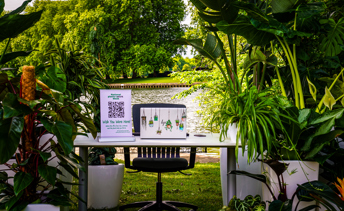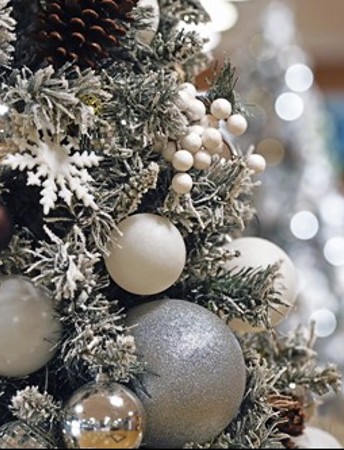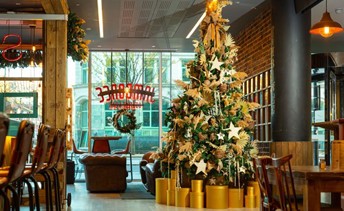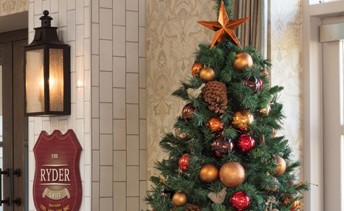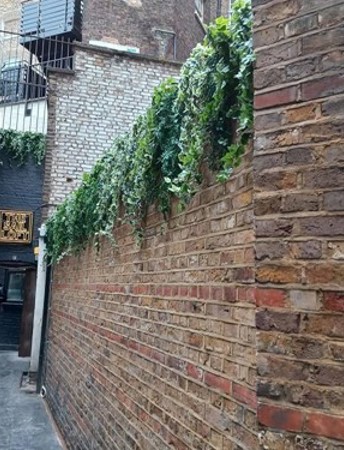Ah, Christmas! A season full of age-old British traditions, or is it? While we all enjoy the festive food, fun and family time, have you ever stopped to wonder where it all came from?
When did the story of a baby boy, born in Nazareth turn into the overindulgent party season that we all look forward to today?
At phs Greenleaf, you may have noticed that we have a particular interest in the Christmas tree, installing more than 2,500 in businesses every year, so we thought we’d delve into its history and origins – where, when and why it was first used as part of our Christmas celebrations. Whether you’re mad about Christmas or a bit of a scrooge at heart, we think you’ll find this interesting. Sit back, grab a mulled wine or gingerbread latte, and enjoy…
To Tree Or Not To Tree
You’ll often have been invited to a ‘traditional Victorian Christmas’ event in the build-up to the big day. Usually accompanied by carol singing, a big stuffed bird, fruit, nuts and a family-sized plum pudding. All overlooked by the noble Christmas pine tree, described in detail in books like Charles Dickens’ A Christmas Carol. You’d think that the Victorians invented Christmas!
Although the Victorians, including the Queen herself and her husband Price Albert, did indeed love Christmas, some traditions, including that of the Christmas tree, date back a lot further. Let’s start in Prince Albert’s homeland of Germany, which had links to many of England’s previous royals.
Here, long before Christianity, ancient folk believed that just as evergreen trees could retain their greenery in winter, they also possessed the power to repel witches and evil spirits. It was quite common to hang a pine, spruce or fir branch over your door in order to deter bad feelings. The evergreen tree was also a symbol that the shortest day of the year (December 21st) had passed and spring was on its way. It was often decorated to represent the Tree of Knowledge in the Garden of Eden, decorated with symbols of the fruit and flowers that were to come in the warmer months.
In the 16th century, Christians adopted this tradition in Germany by moving the trees into their homes and dressing them with apples, roses and tinsel. It was the Protestant priest, Martin Luther who was credited for using candles on the tree to represent stars and red baubles to signify the fruit and flowers. The Christmas tree soon became a symbol of Christmas in Germany and those who moved to other countries delighted in introducing their little piece of home to their new land.
Royal Tree
So, when King George III ruled England, his German wife, Charlotte decided to decorate a tree for her family in the 1790s. It became a private family tradition, until in 1800, Queen Charlotte decided to decorate a whole yew tree as a treat for the children at court, kick-starting the tradition throughout the homes of the upper classes.
The custom was handed down amongst the royals until Prince Albert also decided to honour his German roots by ‘going public’ with the unveiling of an engraving featuring the royal family decorating a tree in 1848. By this stage, he had been importing spruce firs from Germany to decorate rather than indigenous trees, such as the yew.
We know that the trend soon took off with many images of Victorian families sharing gifts around a decorated tree – albeit a much smaller version than that enjoyed by the royals.
As the size of the trees grew, thanks to more general access to imported trees from Norway, Christmas trees moved from table tops to floors and became a focal point in most homes during the festive season, across Europe at least. The larger size also meant that gifts could be laid under the tree by friends, family or Santa Claus himself!
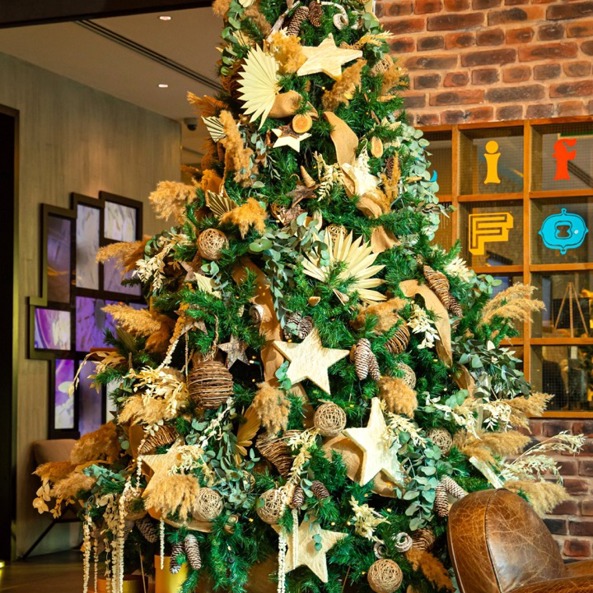
Although its pagan roots made Puritans in the USA reluctant to adopt the Christmas tree in the 18th and 19th centuries, the publicity of Queen Victoria’s family celebrations soon made it popular amongst the well-to-do.
Fir Real
But why the fir tree? The simple reason is that it was one of the few trees that remained bright and green throughout the winter months. In 1507, King Henry VII deforested a lot of the land in England in order to make room for new towns and farmland. In some places, the Norway Spruce was replanted, making it easily accessible and the is the most common Christmas tree in British homes.
Different variations have made their way onto the market – Nordmann Fir, Norway Spruce, Scots Pine – giving the Christmas customer a little more choice and possibly a tough decision, too. No longer just a decoration, the much-loved Christmas tree has become a symbol of friendship and a focal point of celebrations throughout the world. Each year, since 1947, Norway has presented Christmas trees to several UK cities, including London, Edinburgh and Newcastle, as a way of saying ‘thank you’ for support during World War II when the Norwegian ruler, King Haakon VII, took refuge in England. The trees are transported by land and sea following a special harvesting ceremony in November and decorated in the Norwegian style with strings of lights placed vertically, rather than horizontally.
By the late 19th century, Christmas trees were widespread throughout Europe and the USA, with seasonal ornaments being big business. Made of lead and hand-blown glass, Woolworth’s in the USA was selling $25 million worth of ornaments imported from Germany.
But different traditions remain – in Ukraine, for example, it’s usual to see spiders used to decorate Christmas trees as a token of good fortune and luck; many Greeks reject the notion of a tree in favour of their Christmas tradition of elaborately decorated boats; and in some African nations where fir trees just don’t grow, palm trees and mango trees are decorated with items from nature.
Whichever way you celebrate Christmas – tree or no tree; over-the-top or not at all – we wish you all the best for the season and the new year ahead.



























